Introduction
In a world where health challenges are increasingly prevalent, the impact of carrying just an extra 20 pounds cannot be underestimated. This seemingly small weight gain can lead to significant health risks, including:
- Heart disease
- Diabetes
- Joint problems
It also affects overall well-being and quality of life. As obesity rates rise across demographics, understanding the implications of this weight gain becomes crucial not only for individuals but also for organizations aiming to cultivate a healthier workforce.
By recognizing the multifaceted nature of weight management, including psychological, social, and lifestyle factors, HR Benefits Managers are uniquely positioned to implement effective wellness strategies that promote healthier habits among employees.
This article delves into the health risks associated with excess weight, the emotional and physical burdens it brings, and actionable strategies that can foster a supportive workplace culture, ultimately enhancing both individual and organizational health outcomes.
Health Risks of Carrying an Extra 20 Pounds
It is important to understand how much is 20 pounds of fat, as carrying just that extra weight can dramatically elevate the risk of various complications, including:
- Cardiovascular disease
- Type 2 diabetes
- Hypertension
Notably, research shows that overweight individuals face a higher likelihood of developing these conditions, with the prevalence of cardiovascular disease particularly pronounced among this group. Alarmingly, the prevalence of obesity has escalated globally; for instance, in Saudi Arabia, obesity rates surged from 6% in 1975 to around 30% in 2016.
In the U.S., nearly one in three children are affected by obesity, a statistic echoed in adolescent populations aged 12-19. Joint condition can also decline, as the additional mass places increased strain on essential joints such as the knees and hips, resulting in discomfort and limited mobility. A strong motivator for change resides in comprehending these risks; for instance, knowing how much is 20 pounds of fat can demonstrate the considerable benefits to well-being from losing even 5% to 10% of body weight.
The case study titled 'Lose Weight, Feel Better' illustrates this, showing that individuals with high blood pressure who lost 10 pounds experienced reductions in their blood pressure comparable to medication. Cheryl D. Fryar, M.S.P.H., from the National Center for Health Statistics, emphasizes this importance when she states,
Awareness of modifiable risk factors is essential for promoting healthy lifestyle behaviors.
By recognizing and addressing these weight-related wellness risks, HR Benefits Managers can take proactive steps in fostering a healthier workplace culture, ultimately enhancing the well-being of their teams.
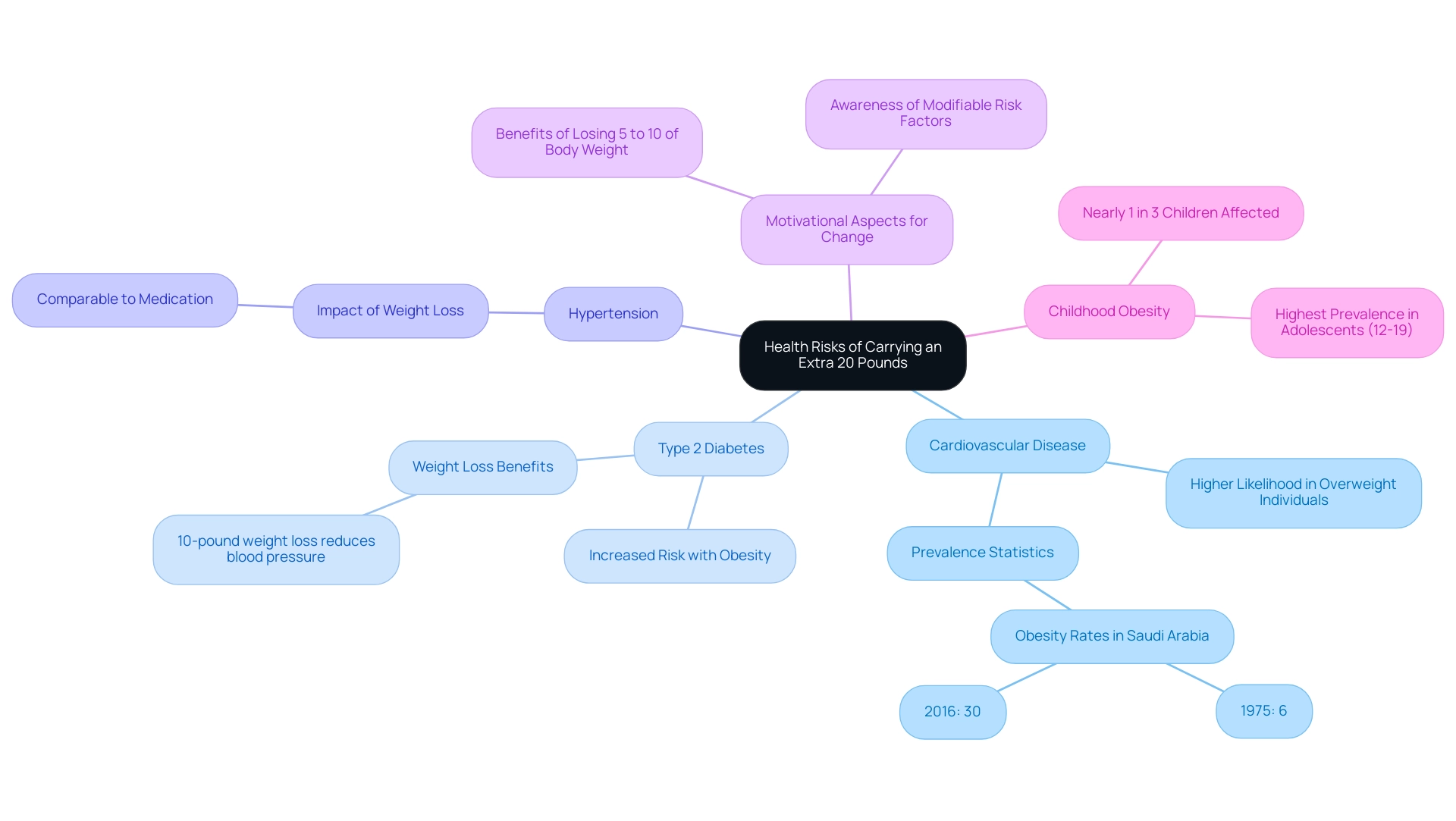
Experiencing the Burden: What It Feels Like to Carry 20 Extra Pounds
Carrying how much is 20 pounds of fat can significantly hinder everyday activities, transforming simple tasks like walking, climbing stairs, or standing for extended periods into daunting challenges. Individuals often grapple with increased fatigue and discomfort, making physical tasks that were once effortless feel burdensome. This physical strain can adversely affect posture and may lead to chronic back pain.
Alarmingly, the prevalence of obesity among children and adolescents ages 2 to 19 years has roughly doubled between 1988–1994 and 2017–2018, indicating a growing public welfare concern. Among adolescents ages 12 to 19, obesity rates have consistently increased during this period. As noted by Harvard Health, "Not only does sleep apnea often lead to daytime sleepiness, it also increases the risk of high blood pressure, heart attack, and stroke."
This alarming statistic highlights the urgency of addressing obesity and its related risks. At Foresight Wellness Coaching, we offer customized wellness guidance that enables people to implement enduring lifestyle modifications. Our tailored programs include:
- One-on-one fitness coaching sessions
- Nutritional guidance
- Wellness workshops designed to create supportive environments that encourage positive transformations
For corporations, our memberships accommodate up to 30 employees and feature:
- In-person wellness discussions
- Comprehensive pantry services
- Access to our wellness app, ensuring a holistic approach to workplace well-being
Additionally, social factors, such as dependence on social networks, may add to the difficulties encountered by people carrying extra pounds, as emphasized in the case study titled 'Social Networks Addiction Assessment.' Understanding how much is 20 pounds of fat can be a strong motivator for individuals to pursue loss and improve their well-being, reinforcing the essential need for our comprehensive coaching services.
Testimonials from our clients illustrate the effectiveness of our evidence-based techniques, showcasing real-life success stories that inspire others to take control of their well-being. Let us help you on your journey to a healthier, more fulfilled life.
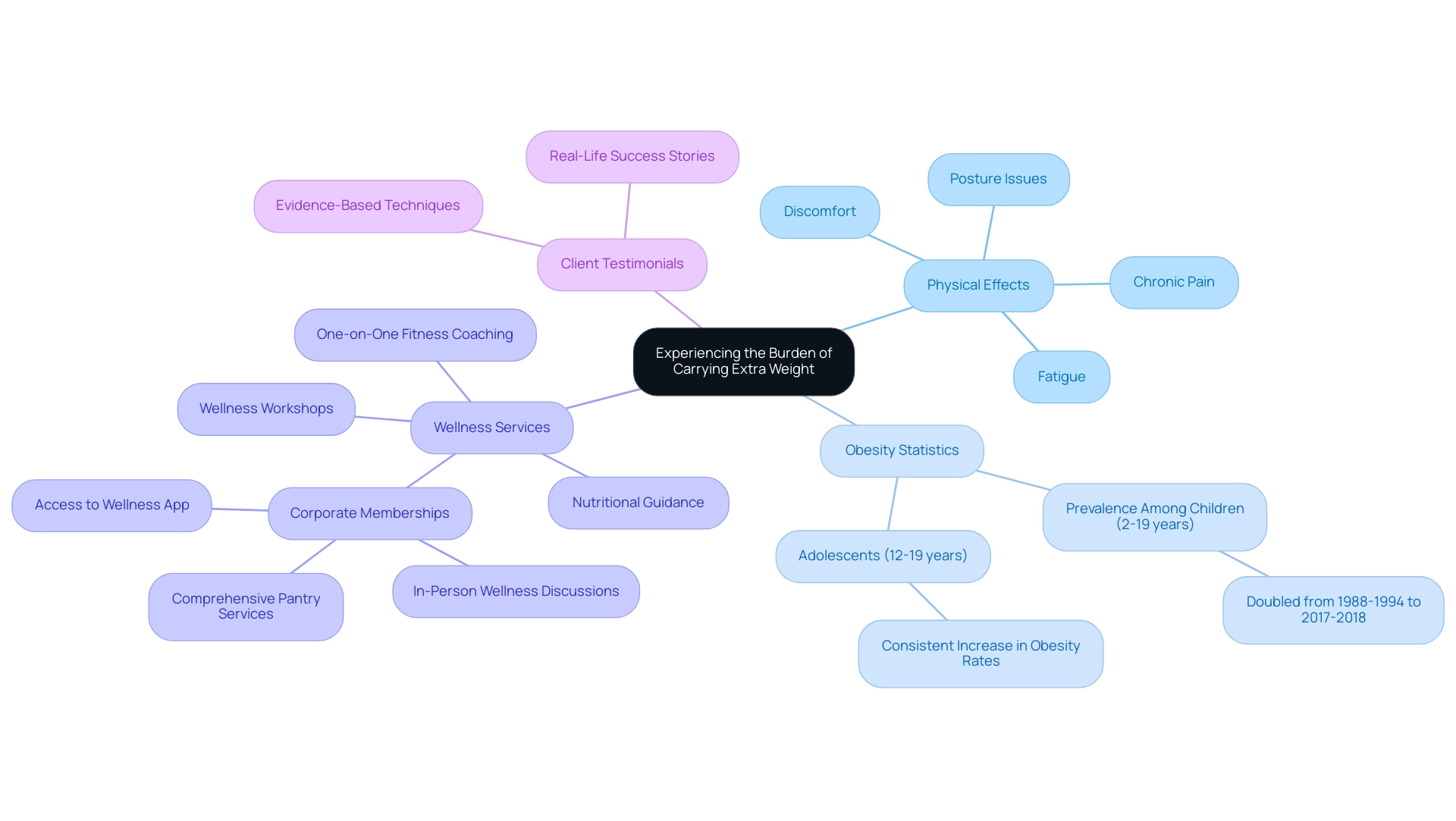
Understanding BMI Changes with 20 Pounds of Extra Weight
Body Mass Index (BMI) functions as an essential measure that assesses mass in relation to height, playing an important role in wellness evaluations. One might wonder how much is 20 pounds of fat, as a mere increase of this amount can propel a person into a higher BMI category, often linked to heightened health risks. For instance, transitioning from a BMI of 24, which is classified as normal, to a BMI of 27 categorizes an individual as overweight, altering the healthcare perspective on their overall well-being.
The latest statistics reveal that severe obesity is most prevalent among non-Hispanic Black adults at 13.8%, compared to non-Hispanic white adults at 9.3%, Hispanic adults at 7.9%, and non-Hispanic Asian adults at 2.0%. Understanding the factors contributing to weight gain—such as diet, genetics, physical inactivity, chronic stress, and inadequate sleep—can aid in managing weight and preventing obesity. Such insights are crucial, especially considering that the prevalence of obesity among children and adolescents aged 2 to 19 years has roughly doubled since the late 1980s.
Furthermore, recent studies, including those published in the journals 'Workplace Health & Safety' and 'Journal of Occupational Health Psychology,' have demonstrated that regular exercise not only reduces risks associated with higher BMI but also enhances employee motivation and emotional well-being. For instance, participation in workplace exercise programs has been linked to a reduction in absenteeism by up to 25% and presenteeism by 15%. By fostering initiatives that promote regular exercise, HR Benefits Managers can empower their teams to experience lower levels of fatigue and stress, resulting in increased engagement and productivity in the workplace.
Ultimately, prioritizing exercise as part of wellness initiatives can lead to a fitter, more motivated workforce, enhancing overall well-being outcomes.
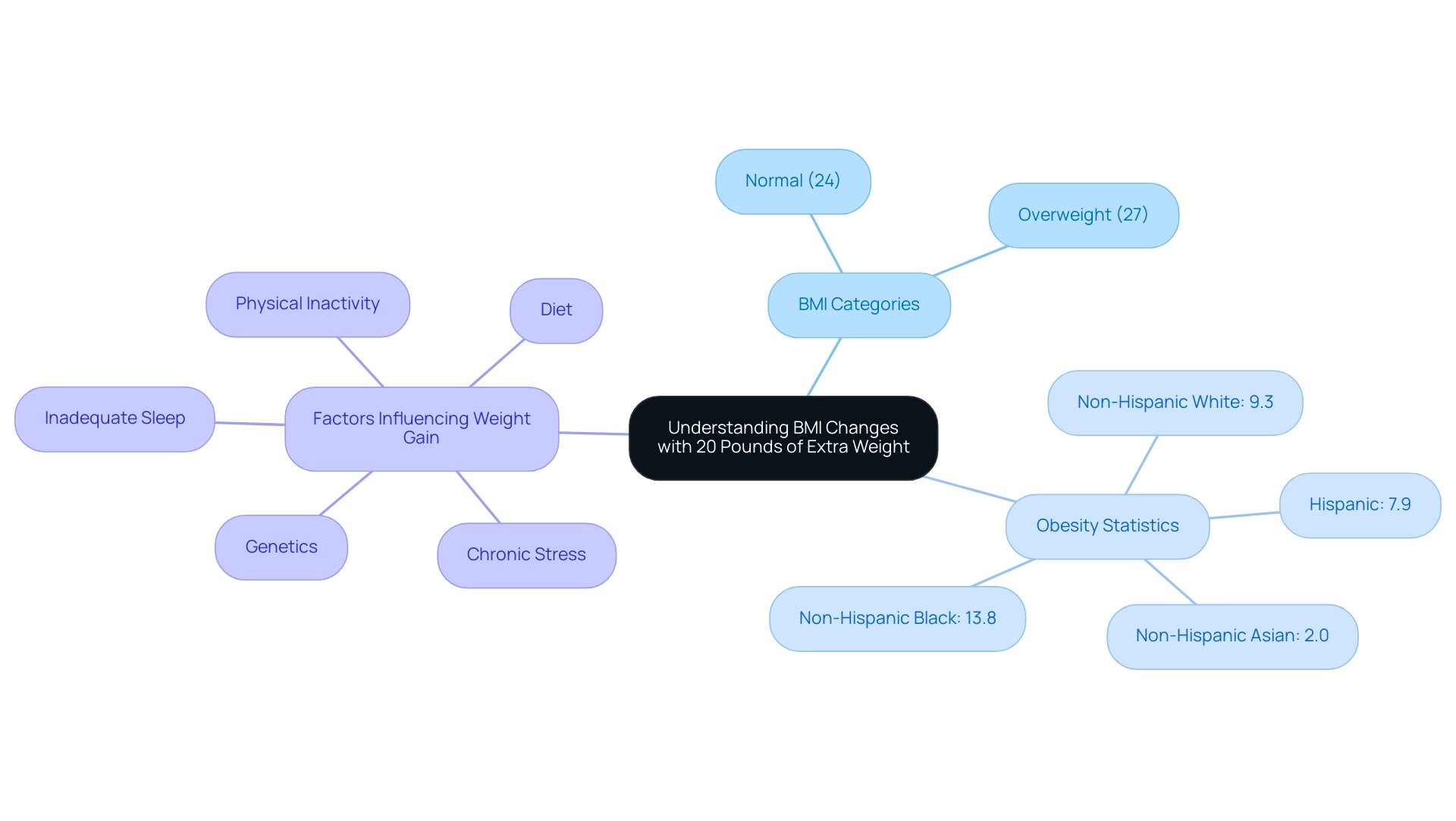
Psychological and Social Factors Influencing Weight Gain
Weight gain is often a multifaceted issue influenced by a variety of psychological and social factors, such as stress, emotional eating, and societal pressures that shape our behaviors. The escalating adult obesity rates, which have more than doubled since the 1980s, underscore the urgency of this concern. Numerous people find it difficult to uphold beneficial routines because of demanding schedules, inadequate assistance, and underlying mental wellness challenges.
Recent studies illuminate the psychological dimensions of gain, categorizing factors into mental health, cognitive, and psychosocial variables. For example, psychologists stress that emotional eating can result in considerable gain, especially when people handle stress or societal expectations. Moreover, the relationship between bariatric surgery and increased risk of substance use disorders is critical; evidence suggests that individuals may experience 'addiction transfer,' where the focus shifts from food to substances post-surgery.
A case study highlights concerns regarding the development of substance abuse problems following bariatric surgery, indicating an increased risk of problematic substance use, particularly among certain demographics. This underscores the need for further research in this area. As Ms. H.M. Polonsky notes, understanding these psychological factors is essential for addressing weight management effectively.
As HR Benefits Managers, fostering a supportive environment within your organization is essential. Implementing tailored corporate wellness programs can significantly enhance employee well-being, productivity, and cognitive performance through individualized support and exercise. These programs can lead to reduced absenteeism and lower healthcare costs, making them a proactive investment in your bottom line.
By understanding these dynamics and promoting healthy habits, you can make a substantial impact on your team's well-being and overall health, ultimately leading to a more engaged and loyal workforce.
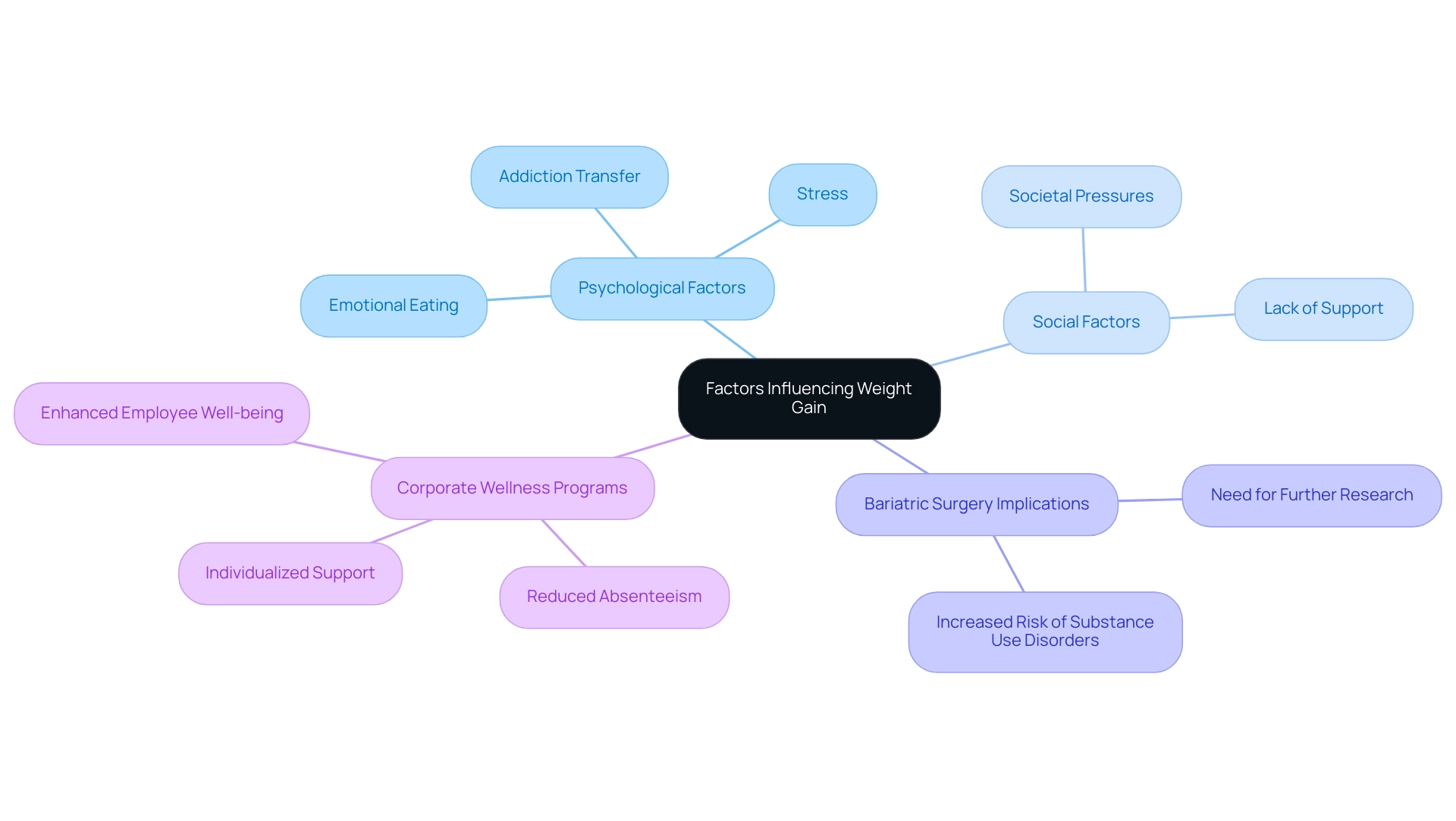
Effective Strategies for Losing 20 Pounds Safely
Reaching a secure reduction of how much is 20 pounds of fat is attainable when you apply the appropriate strategies. Here are five effective approaches to get started:
-
Create a Calorie Deficit: Begin by consuming fewer calories than you burn.
Utilize a food diary or a tracking app to monitor your intake and stay on course. This fundamental principle is essential, particularly as the management sector for body mass is anticipated to attain an astonishing $423.2 billion by 2027, indicating the growing emphasis on effective methods for reducing mass.
-
Incorporate Regular Exercise: Aim for at least 150 minutes of moderate-intensity aerobic activity weekly, complemented by strength training exercises twice a week.
These activities not only aid in reducing mass but also improve overall health and well-being. At Foresight Health Coaching, our personalized fitness coaching sessions are designed to help individuals adhere to these recommendations, ensuring a balanced exercise routine vital for achieving long-term results.
-
Focus on Whole Foods: Prioritize a diet rich in fruits, vegetables, whole grains, and lean proteins while minimizing processed foods and added sugars.
Making informed nutritional choices lays the foundation for a healthier lifestyle. As one nutritionist aptly stated,
Safe methods for reducing body mass must emphasize whole, nutrient-dense foods for sustainable success.
Our coaching includes nutritional guidance to support these choices effectively.
-
Stay Hydrated: Drinking plenty of water throughout the day is essential for metabolism and helps to reduce appetite.
Sufficient hydration can also aid your body's natural functions, making it easier to reach your goals, including understanding how much is 20 pounds of fat.
-
Prioritize Sleep: According to studies, when dieters are sleepless for 14 days, the amount of mass they lose from extra fat lowers by a stunning 55%.
Thus, to reduce mass and stay healthy, adequate sleep is crucial. This underscores the significance of sleep in the reduction of body mass, a concept we integrate into our holistic health coaching.
-
Seek Support: Finding an accountability partner or joining a fitness group can significantly enhance motivation.
Sharing your journey with others offers motivation and cultivates a sense of community, which has been demonstrated to enhance success rates in reduction strategies. Our wellness programs at Foresight include workshops and webinars that not only educate but also foster a supportive community for participants.
By embracing these strategies, individuals can not only achieve sustainable weight management but also enhance their overall health. In fact, in 2021, 60% of U.S. adults expressed a desire to live healthier lifestyles, echoing the sentiments from recent studies that link adequate sleep to effective fat loss. Remember, every small step counts towards a healthier future!
Additionally, Foresight Health Coaching offers app-based delivery of our coaching services, enhancing accessibility and engagement for clients. Our corporate memberships include in-person wellness talks and nutrition services, providing comprehensive support for organizations looking to foster a healthier workplace.
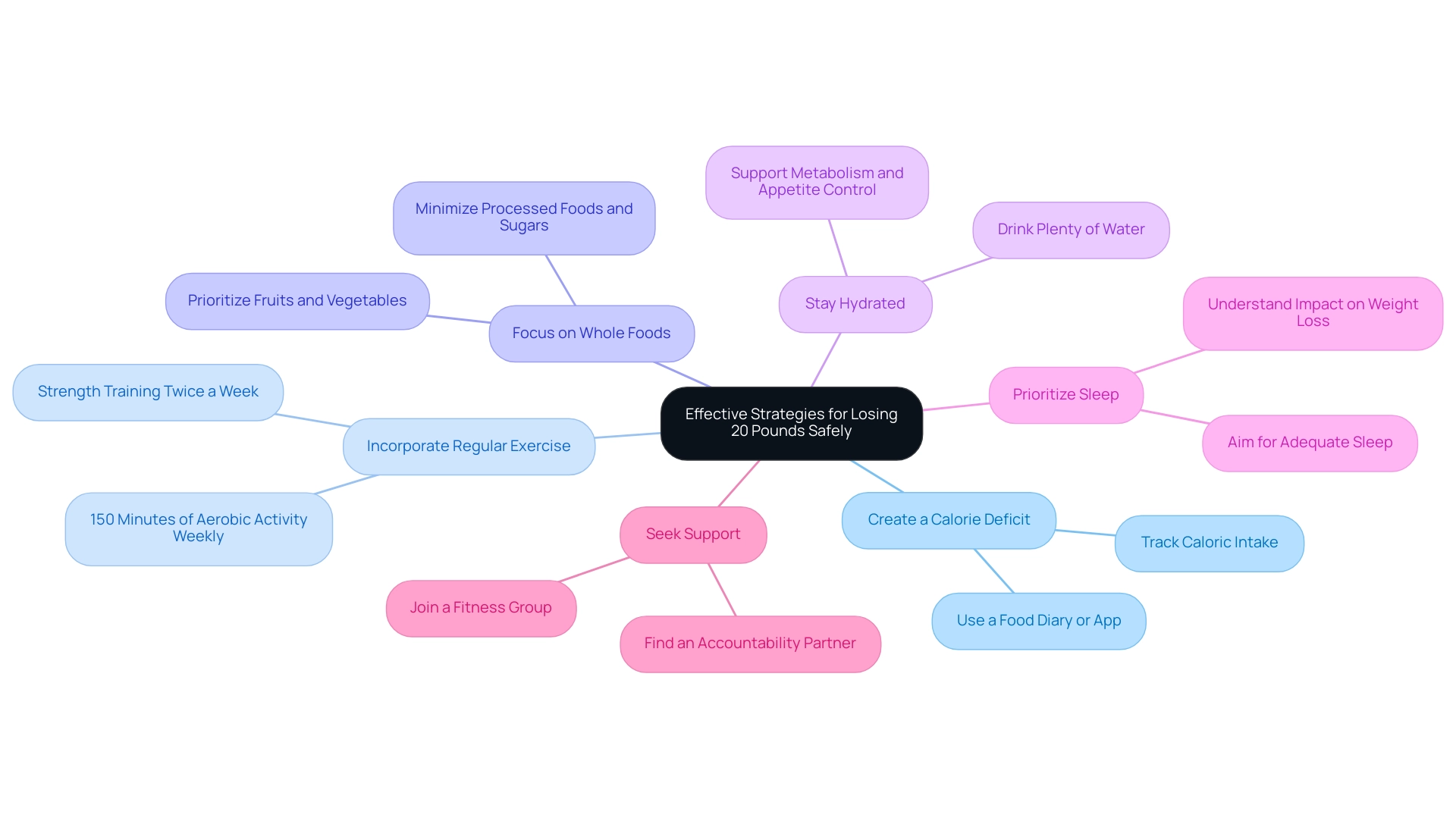
Conclusion
Recognizing the impact of carrying an extra 20 pounds is vital for both individual health and organizational well-being. This seemingly minor weight gain can lead to serious health risks, including heart disease, diabetes, and joint problems. The statistics paint a concerning picture, with obesity rates on the rise globally, particularly among children and adolescents. By understanding these risks, HR Benefits Managers can take proactive steps to cultivate a healthier workplace culture that prioritizes employee health.
The emotional and physical burdens of excess weight extend beyond the scale, affecting daily activities, mental well-being, and overall quality of life. Implementing effective strategies for weight management, such as promoting regular exercise and fostering supportive environments, can empower employees to make positive lifestyle changes. Emphasizing the importance of nutrition, hydration, sleep, and community support can lead to sustainable weight loss and a healthier workforce.
Ultimately, prioritizing employee well-being is not just a moral obligation but a strategic investment in organizational success. By embracing comprehensive wellness programs and encouraging healthier habits, HR Benefits Managers can enhance productivity, reduce absenteeism, and foster a more engaged workforce. The time to act is now—let’s champion health and well-being in the workplace for a brighter, healthier future.




